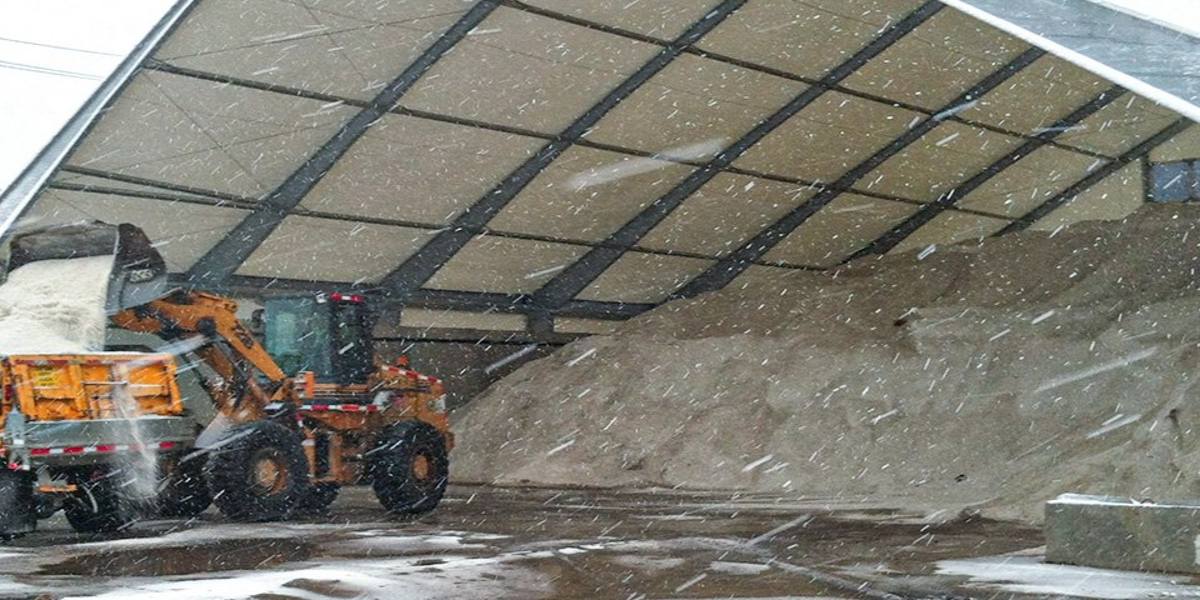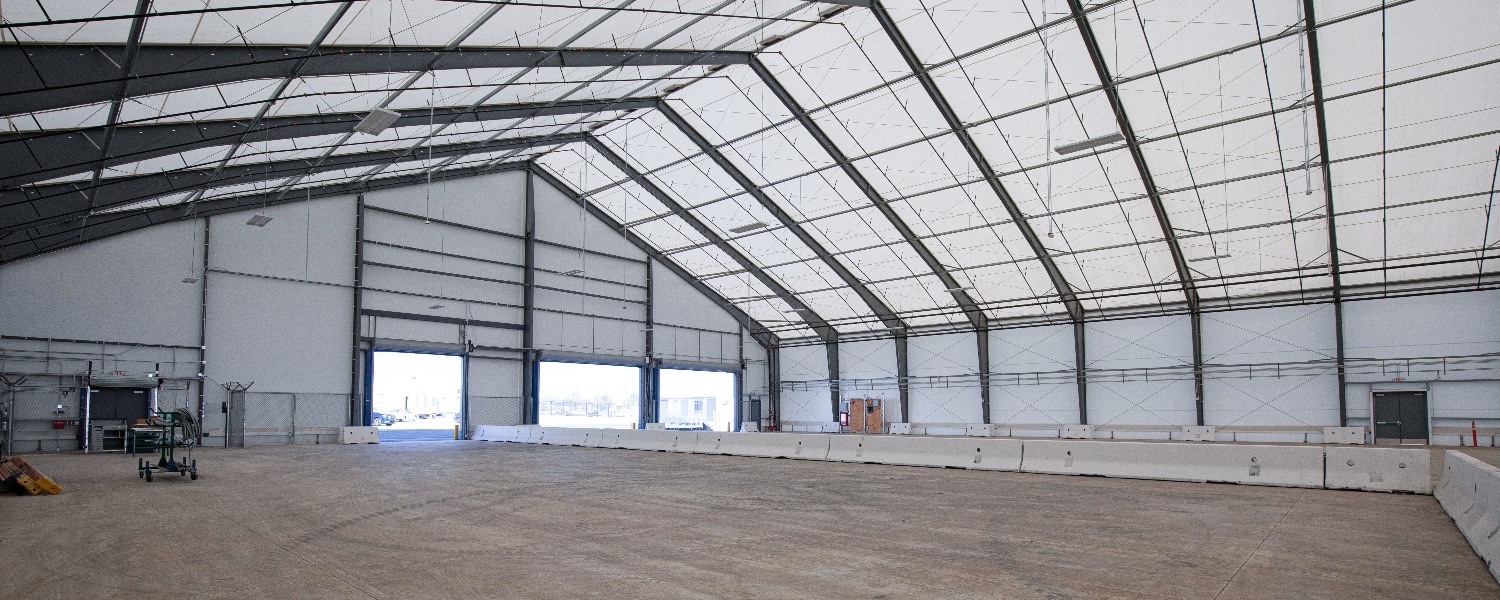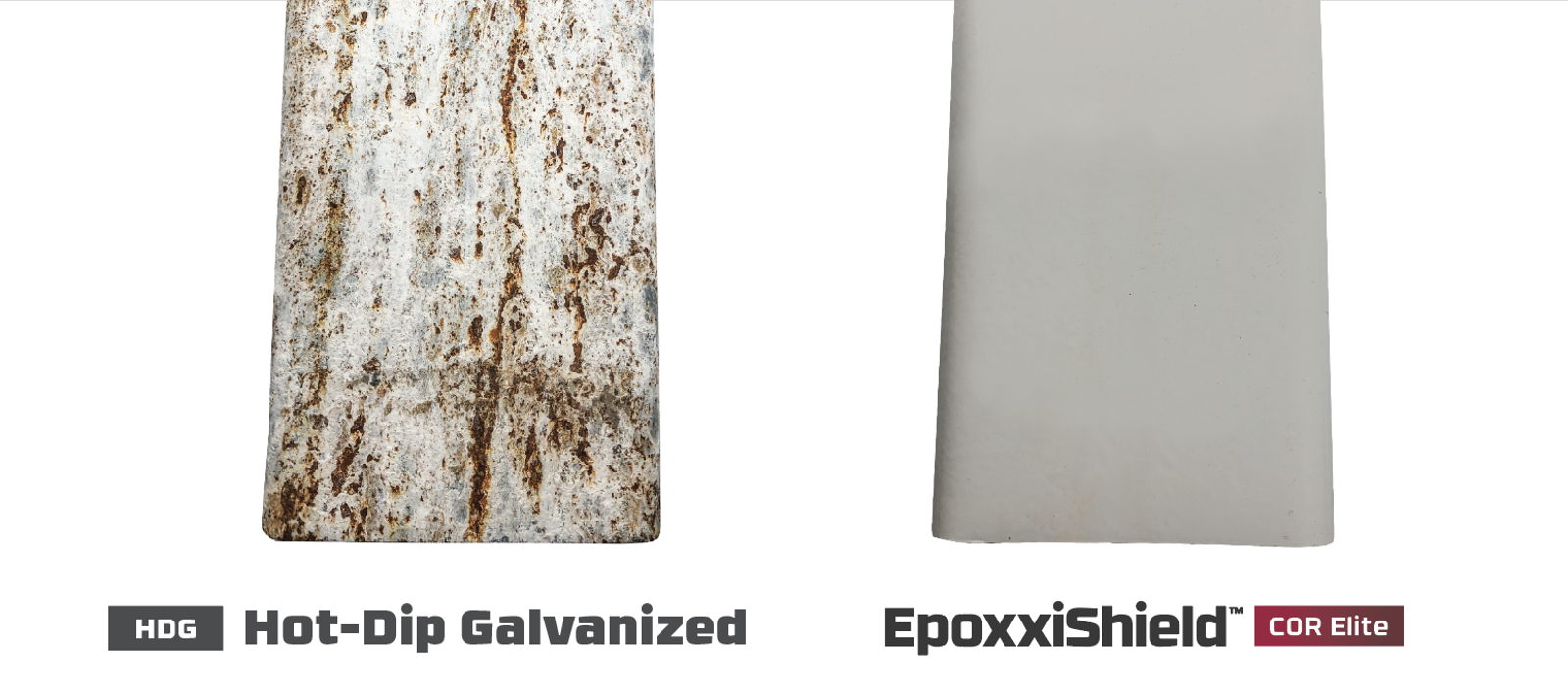Corrosion Resistant Fabric Building Solutions

Corrosion will inevitably damage metal - making metal buildings unsightly and unsafe, and in some cases, even causing building failure.
But it doesn't have to be that way. Structural fabric is non-corrosive. In corrosive environments, such as salt storage buildings or fertilizer facilities, there are options to protect the steel frame from corrosion problems.
Hot Dip Galvanized Building Frames
Hot dip galvanizing is a process of chemically bonding a zinc coating to steel. Although there are several methods of coating steel, hot dip galvanizing provides the most protection.
During hot dip galvanizing, the steel is dipped in zinc for a uniform coating. Once the steel is dipped, no other elements come in contact with it, leaving the steel itself immune to the impact of corrosive materials.
In some cases, e.g., in a mining building that stores copper concentrate, galvanizing is not the right solution because the material "reacts" with the zinc in the coating. An epoxy coating, or multiple epoxy coatings, is advisable in these cases.
Solid steel beams are also more resistant to corrosion than open web trusses. The solid beams have no unseen interior spaces where corrosion can start.

But for the highest level of corrosion, an interior fabric liner keeps all steel members completely separated from elements that may cause corrosion or damage. Lined buildings prevent all elements, even fine dust, from building up on steel frames. With no opportunity for corrosive materials to contact the steel, there is no way for corrosion to start.
Fabric buildings with non-corrosive building designs will resist corrosion and remain beautiful and sturdy for years to come. The money you'll save for future maintenance is another reason to choose a fabric building.
Epoxy Coated Steel Frames
Legacy Building Solutions creates strong steel frame fabric structures. We are proud of our engineering and creative solutions which exceed our customers' expectations. Since the very beginning, Legacy was built on the desire to do something better, greater, and more efficient.
That is what our founder Ben Fox’s vision started out as, and now his dream is a reality. First, it was about building a better tension fabric structure. Now, it is about how we can best protect these buildings. An older method of corrosion protection is hot-dip galvanizing (HDG) or inline galvanizing. Across the industry, this was common practice and is still used today.
However, our bulk storage buildings offer added corrosion protection over HDG. EpoxxiShield™ is an epoxy coating applied to the structure, creating a barrier of corrosion protection. Legacy tested two pieces of steel; one with the HDG and one with EpoxxiShield™.
Through testing, we discovered the corrosion went deeper into the HDG-protected steel, whereas the steel with EpoxxiShield™ outperformed with no visible damage. EpoxxiShield™ will keep your building frames better protected and easier to repair. You can read up on HDG vs. epoxy coating more in another blog post here.

Legacy’s Solution
Have the peace of mind that fabric can offer; your building’s life is extended just by being clad in fabric. Corrosion damage is eliminated due to the nature of the fabric, and the lack of screw hole penetrations decreases the risk of water/air leakage. The steel parts in a Legacy building can be protected with EpoxxiShield™, a coating that provides strong, deep protection against corrosion. Tension fabric structures are what we do, and innovative thinking is who we are.
Corrosion will inevitably damage metal - making metal buildings unsightly and unsafe, and in some cases, even causing building failure.
But it doesn't have to be that way. Structural fabric is non-corrosive. In corrosive environments, such as salt storage buildings or fertilizer facilities, there are options to protect the steel frame from corrosion problems.
Subscribe to our Blog
Recent Posts
- 5 Factors Every Project Owner Should Consider Before Approving Building Materials
- The 20-Year View: How Material Choices Impact Long-Term Operational Costs
- Climate Resilience in Commercial Construction: Why Traditional Methods May Not Be Enough
- Speed and Quality: The Role of Hybrid Building Materials
- Beyond the Bleachers: Designing Visually Striking Sports Facilities
